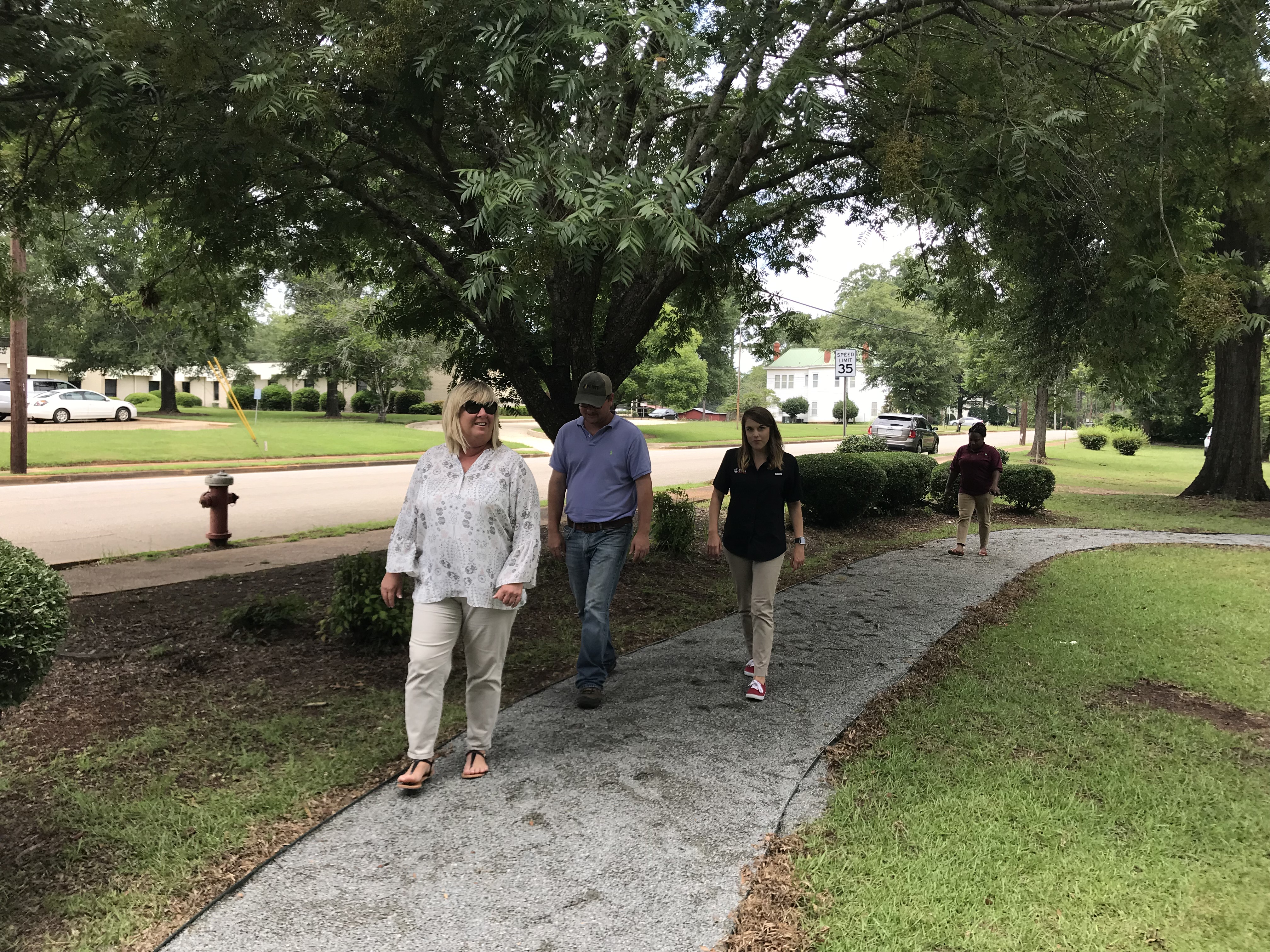By Amber Perry
[This is part of a series of briefs covering the 2019 State of the Public’s Health conference produced by graduate students at the UGA Grady College of Journalism & Mass Communication in conjunction with the Health and Medical Journalism Program.]
Imagine two neighborhoods: One with neatly maintained sidewalks that pedestrians can easily navigate. The other full of weeds and difficult to maneuver.
Architects say the latter is the reality for many small towns, which unlike their urban counterparts, have been neglected in both the design of the streets and maintenance of the landscape. But beautification isn’t the only reason to focus on the issue, experts say.
“As landscape architects, we’re pretty much convinced that the work that we do related to the design of the built environment really can help with the health of the environment,” said David Spooner, associate dean of academic affairs at the University of Georgia College of Environment and Design. He said that the built environment is any place where humans have intervened.
Spooner discussed the concept at the 8th annual State of the Public’s Health Conference. The day-long event in late-October focused on various health-related issues in Georgia, like high maternal mortality rates and poor access to healthcare services in rural communities.
At a panel on improving public health through landscape design, Spooner and colleagues discussed a collaboration between UGA’s College of Environment and Design and the UGA Cooperative Extension in the College of Public Health. With funding from the Center for Disease Control and Prevention, they aim to improve public health in rural communities with obesity rates above 40%.
Landscape designers are currently focusing on Taliaferro County and its county seat Crawfordville, located in northeast Georgia. The county has an estimated 1,700 residents.
In small towns like Crawfordville, UGA researchers are trying to create safe, walkable places where people want to be, and the approach incorporates the realities of the rural landscape.
“There are rolling hills. Things are spread way apart. And some families have to share a car between eight different people,” explained panelist Jennifer Lewis, director of the Center for Community Design and Preservation. Moving resources to a central location may work best.
What happens more often is that planners create designs that originated in urban settings, panelists told the audience. That is, if any updates happen at all.
For example, people may avoid exercise if the nearest path is unkempt. Georgia is the sixth most dangerous state to walk in, according to a study by Smart Growth America, a nonprofit whose mission is to shape discussion around development strategies.
There’s data to suggest public health interventions can be successful when designed around places where people already spend time, like schools and churches, and when they incorporate walking and bike trails in strategic areas. But these best practices are not always adopted.
Landscape architects, public health researchers and Crawfordville residents worked together to develop a trail and roadway network that took advantage of the existing landscape. It connected historical sites and bike and pedestrian lanes, explained Donnie Longenecker, a senior lecturer at the College of Environment and Design.
Residents could provide the kind of local insight that is often overlooked by designers, who come to the towns wielding case studies from urban areas. Collaboration is key to success, panelists said. Working together boosts local support and creates a natural feedback loop.
“We start with listening,” Lewis said about the team of designers. “We really operate on a system of critique and feedback.”
Posted on November 15, 2019.
Additional Conference Briefs:
- How working with community volunteers can bridge gaps in health care access
- When loss negatively affects an individual’s health, bereavement training can offer solutions
- Health misinformation confuses communities, persists in memory
- Improving family’s public health by making education a focal point
- Resilient Georgia links public and private organizations to bolster fight against child trauma







